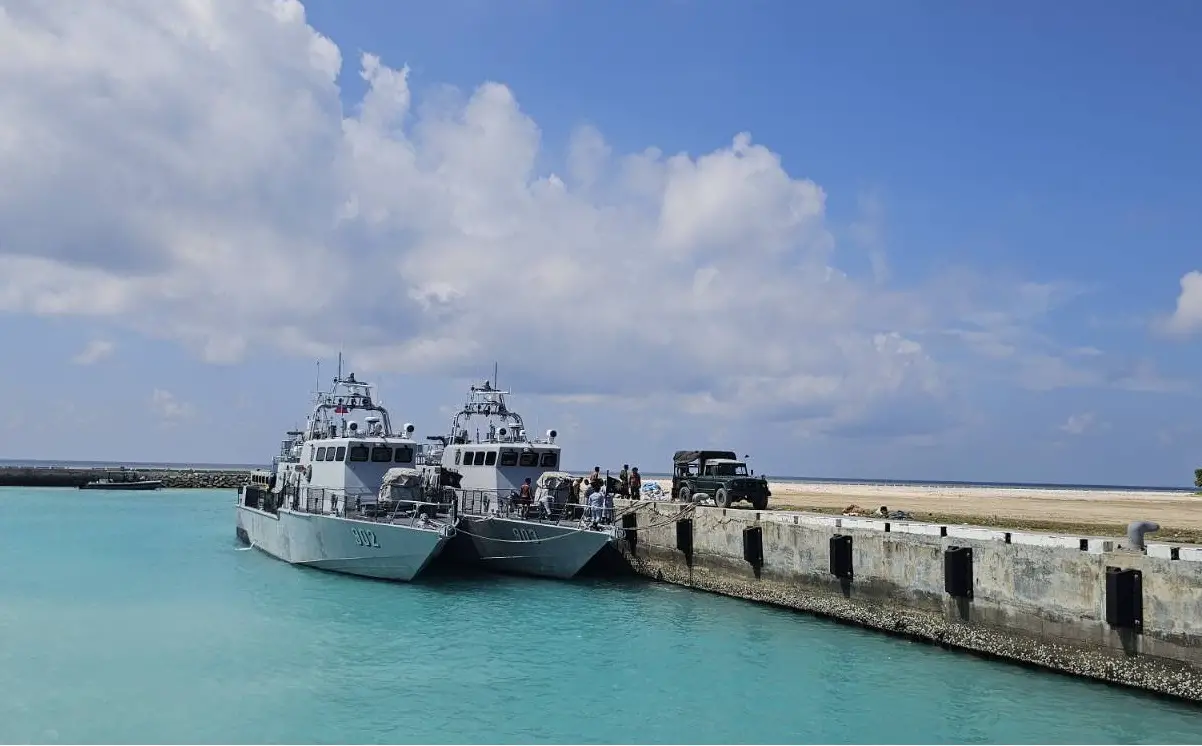The Philippine Navy’s Acero-Class Patrol Gunboats, BRP Lolinato To-ong (PG902) and BRP Gener Tinangag (PG903), have recently completed a critical Maritime Patrol and Sovereignty mission around Pag-asa Island, part of the strategically significant Kalayaan Island Group. The mission reflects the Philippines’ steadfast commitment to asserting territorial sovereignty and maintaining jurisdiction over this contested region in line with international law. This operation is a key component of the Armed Forces of the Philippines’ (AFP) Comprehensive Archipelagic Defense Concept (CADC), an initiative designed to bolster the country’s maritime security and ensure the protection of its expansive maritime territories. The Philippine Navy’s Littoral Combat Force (LCF) plays a crucial role in these efforts, providing operational capabilities that enhance the readiness and effectiveness of the Naval Operating Forces (NOFs).
The Acero-Class patrol gunboats are part of the Navy’s modernization efforts, featuring advanced weapon systems based on the Israeli Shaldag V design. These fast, agile ships are equipped with a bow-mounted Mk.44 Bushmaster II autocannon, installed on a Rafael Typhoon Mk 30-C remote-controlled weapon station, and two M2HB Browning 12.7mm/50-cal heavy machine guns mounted on Rafael Mini Typhoon remote-controlled weapon stations. Some vessels in the class are configured with Rafael Typhoon MLS-NLOS missile launchers for Spike-NLOS surface-to-surface missiles, further increasing their offensive capability. The Acero-Class boats also include a 5.2-meter rigid inflatable boat (RHIB) for rapid deployment, supported by a 1,000-kilogram crane for added versatility. These patrol gunboats are designed to replace the retired Tomas Batilo-class fast attack crafts and serve as the backbone of the Navy’s coastal patrol and interdiction missions.

The contract for these missile-capable coastal patrol interdiction crafts was signed between the Department of National Defense (DND), Israel Shipyards Ltd., and the Israeli Ministry of Defense on February 9, 2021, with the construction process officially beginning on April 27, 2021. The BRP Lolinato To-ong (PG902) was launched in June 2022 and was commissioned into active service on November 28, 2022, alongside her sister ship, the BRP Nestor Acero (PG901). Both BRP Lolinato To-ong and BRP Gener Tinangag were commissioned into the Littoral Combat Force during the Philippine Navy’s 125th Anniversary on May 26, 2023. These vessels represent the first deliveries out of nine Fast Attack Interdiction Craft (FAIC) units ordered as part of the Philippine Navy’s ongoing modernization efforts. The “PG” designation signifies their classification as Patrol Gunboats, adhering to the Philippine Navy’s 2016 naming standards.
The Shaldag-class patrol boat (Kingfisher) is a small but fast class of patrol boats developed for the Israeli Navy and launched in 1989, it has since seen service with several other navies. It is designed for security tasks where high intercept speeds are required, such as interdiction of terrorism and illegal smuggling. The Mk V is the largest member of the Shaldag class family. Combat-proven and capable of carrying higher payloads, the Mk V meets varying operational needs. Notably, slight design differences exist between the Mk V boats delivered to the Philippines and Israel. For instance, the Israeli Navy’s vessels feature a small, round rotating window on the bridge, whereas the Philippine Navy’s ships are equipped with windows surrounding the entire bridge. Key specifications of the Mk V include a 32.65-meter length, a displacement of around 95 tons, a maximum speed exceeding 40 knots, and a range of 1,000 nautical miles at 12 knots.















